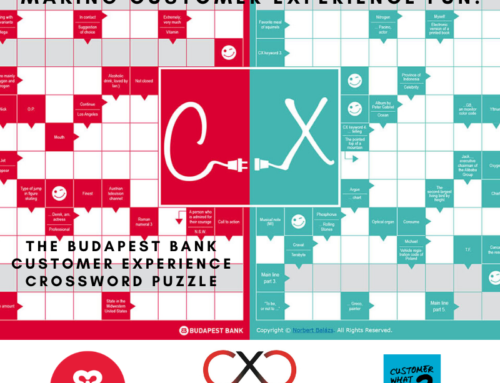
Last week I made a telephone call to my bank. A routine query, I chose to pick up the phone and call with my question, rather than use any other channel open to me. Having gone through the usual number selection process (or IVR as it is known technically), I was connected to a human. The chap I spoke to was very nice – he answered my question in less than thirty seconds. The entire experience lasted no more than 90 seconds ‘end to end’. All pretty simple. I disconnected the call without another thought.
Now you may be wondering what this rather banal story has to do with the subject of customer feedback. Let me explain. Approximately five minutes after I had concluded the telephone call with my bank my telephone rang. I was greeted by an automated message from the very bank I had just been conversing with. The message asked if I would be happy to participate in a short survey regarding my ‘recent’ experience. I was slightly taken aback. I had not given anyone permission to call my home telephone number to ask for my feedback on the call I had just made. The nice man I had spoken to did not say anything about it either. Rather than providing feedback, I disconnected the call with a sense of annoyance at what had just occurred – and that is why I am writing about the customer feedback experience.
For many years I have been troubled by one of the key pieces of the Customer Experience jigsaw puzzle – VOC (Voice of the Customer). I have not been troubled by the need for it – quite the contrary. VOC is one of three essential, obligatory elements of any Customer Experience measurement programme (VOP – voice of the process and VOE – voice of the employee being the other two).What has troubled me is the way organisations go about getting it – or in other words, the suitability and appropriateness of the very experience we put our customers through in order for us to find out what they think.
When was the last time you provided feedback to an organisation? Whilst we are able to deliver feedback without any prompting from the companies we interact with, the same companies are constantly trying to get us to tell them what we think via a variety of surveying methods. The same channels we use to conduct our transactions are also used to solicit our thoughts – both in words and numbers. Most of the methodologies used are the same today as they were many years ago – not a great deal seems to have changed. Doing what I do for a living, I often provide feedback when asked – I feel it is critical to allow companies to understand how I feel about my experience with them whilst I am always interested to understand what they want to know.

So let me ask again – when did you last provide feedback to an organisation that asked you for it? What did you think of the experience of actually doing it? Did you even consider the act of giving feedback to be an experience in itself? Too often the experience of giving feedback is not a great one. Regularly faced with lengthy online surveys, many consumers become disengaged very quickly. That is why methodologies such as NPS (Net Promoter Score) and Customer Effort have been so successful – radically simplifying the capturing of information can make it a better experience for the customer in providing it.
The challenge for customer focused organisations today is that they need to be able to design the customer feedback experience in the same way they design their customer journeys. As with the customer journey, capturing customer feedback should have a clear business need as well as defining some form of clear purpose for the customer to align to. It is very common for me to come across customer feedback mechanisms that have defined neither. I therefore urge all those responsible for customer feedback in their organisations to consider the following:
Business Need
- Do you have a ‘customer feedback strategy’ in place?
- Have you mapped/designed the customer feedback experience?
- Is your customer feedback mechanism(s) actionable?
- Is your customer feedback mechanism linked to employee performance and incentives?
Customer Purpose
- Do you know how your customers want to provide feedback?
- Do you know what customers think about the experience of giving feedback?
- Do you have any defined way of keeping customers informed of actions you take as a result of their feedback?
- Do you have a defined strategy to maintain customer engagement in continuously providing feedback?
Businesses will always need measurable and actionable customer feedback to continuously improve the experience they have with their organisation. Unless companies get better at designing the experience of providing feedback, there is a risk that too many customers will just not bother to give it any more. The extremes of customer perception will always make their voice heard – the unsolicited voice of the very happy or very angry – via a variety of social media channels. However, if we want the silent majority to keep helping us make our businesses better at giving them what they want and need, we must ensure that we make the experience of giving feedback one that the silent majority can more comfortably engage with.
Businesses will always need measurable and actionable customer feedback – without it, sustaining a focus on customer experience in an organisation is made very difficult We must therefore NEVER take for granted that customers will carry on giving us the feedback that we so urgently need. Go and review your customer feedback mechanism today – walk the experience for yourself and ensure that you are able to maintain your approach to customer feedback in the future.






I have sometimes found when the going gets tough a number of companies take the easy way out and ignore your complaint.
Ian – you raise some really important points here. Basically its open season now in terms of customer feedback – the consumer expects to be asked for their feedback nowadays and because its so cheap and convenient to comment many are happy to do so. This means organisations are awash with data and struggling to extract all the value out of it. But amidst all the excitement, sometimes the vital issue of customer experience in relation the feedback process itself is overlooked and your story is a fine example of this. Happy to share some of the relevant principles we follow when setting up a CEX solution for our clients:
1. Respond in kind: where possible survey/dialogue with the customer using the same mode as they used to contact the brand (fyi we do NOT consider automated IVR as the same mode as an agent telecon)
2. Treat surveys as a touchpoint like any other: design the CEX with the same degree of care as you would any other customer interaction
3. Stay in tune with customer behaviour: customer acceptance and device usage is changing all the time. Gone are the days that we could only survey customers once a month/quarter/year etc. But some red lines remain. We do not believe unsolicited, outbound automated telephone interviews have gained widespread customer acceptance. We suspect the consumer knows they are only used because they are cheap and they resent this.
We have less of a problem with ‘inbound IVR’ i.e. customer stays on the line and answers a question or 2 but there should be an opt in to this and the process should be free from agent interference.
Thank you for taking the time to read and respond in such detail Derek – your expert view is very much appreciated.
I enjoyed reading this article. It is well written, and the advice given is spot on. Well done!
Thank you so much for your lovely feedback Jo – very much appreciated.